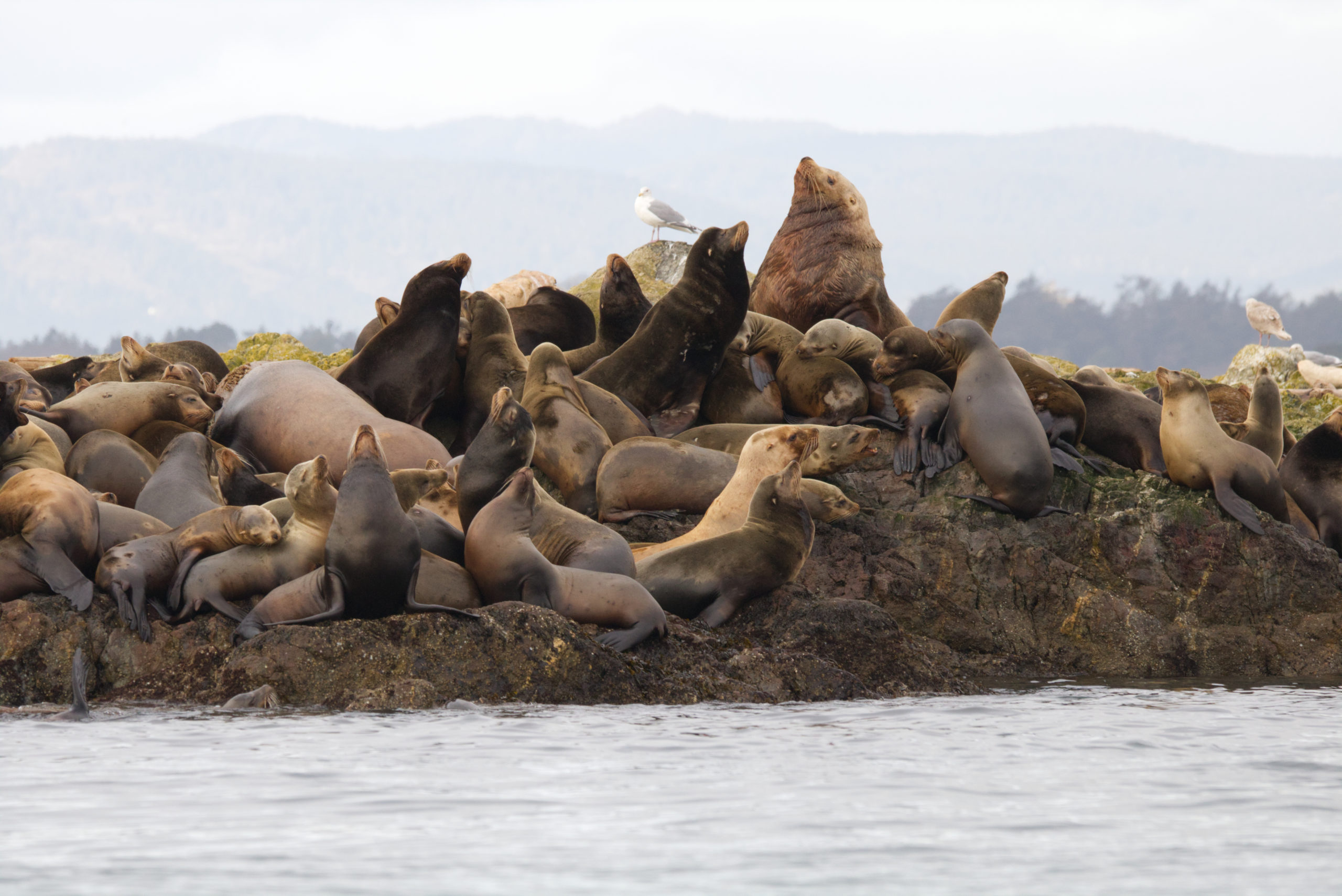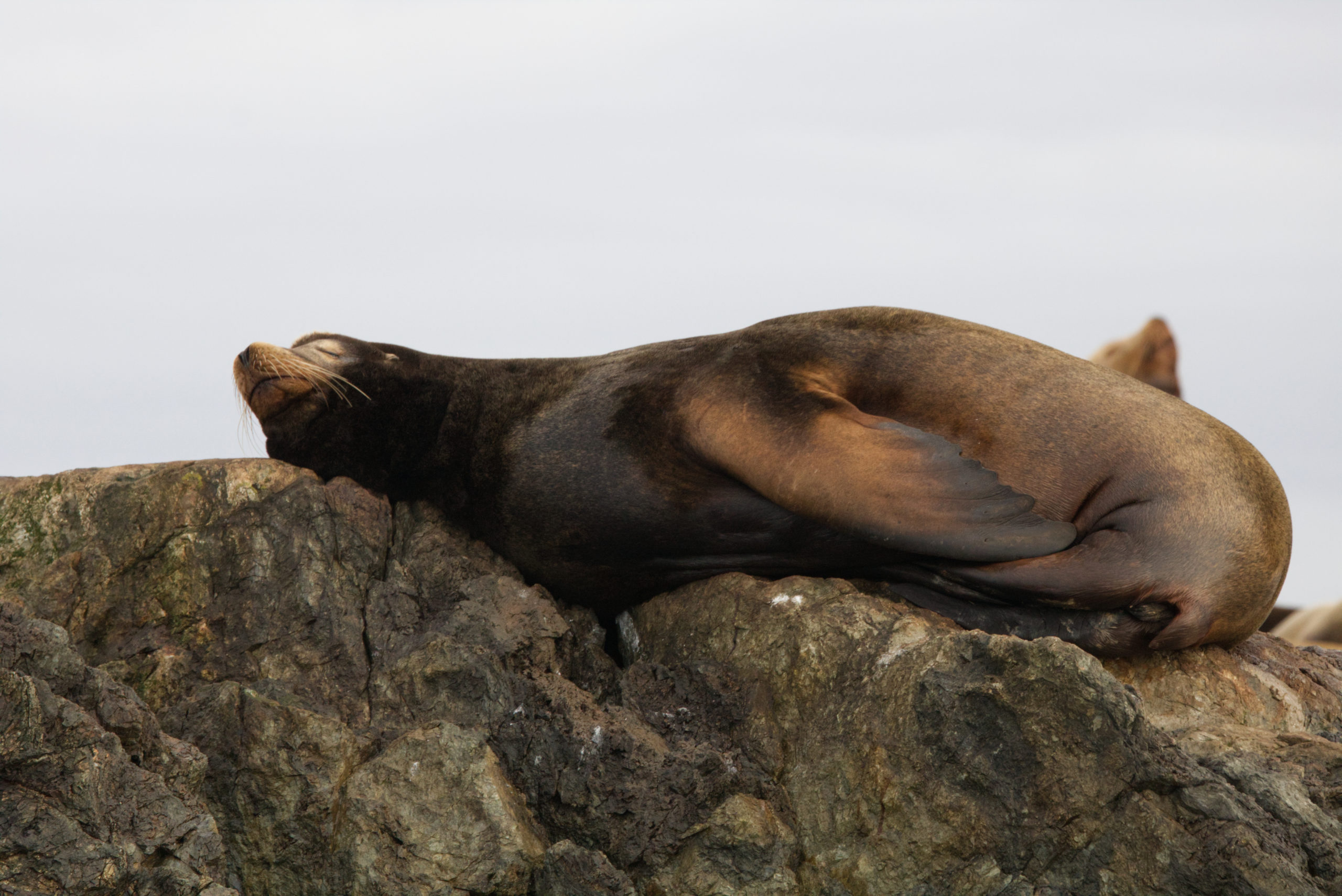
Sea lions hauling out by the hundreds on Trial Islands off the south-eastern tip of Vancouver Island are making a splash and leaving onlookers in awe.
Oak Bay’s Steven Myhill-Jones captured photos of the clamorous creatures during a Saturday morning paddle that left him, his friend and his friends’ kids stunned by the sights, smells and sounds.
“I think the photos are interesting, but probably of all the five senses, the imaging would come in third after the smell and the noise,” Myhill-Jones, an experienced kayaker, told CHEK News Sunday.
Equipped with a telephoto lens, he kept his distance but still managed to photograph the herd atop giant rocks, later posting the images to Facebook where he was met with applause.
“They’re very loud and barking. It’s not deafening, but I was trying to have a phone call actually and I had to hang up because the barking was so loud. They couldn’t hear me,” Myhill-Jones said with a laugh. “And the smell — there’s no smell until there’s a lot of smell. The wind takes it and it’s very noticeable.”
The pinnipeds are, in a way, on winter vacation, says Anne Hall, a marine mammal zoologist at the Metchosin-based Sea View Marine Sciences.
She calls them curious and inquisitive creatures that, from time to time, watch people as much as people watch them.
“There are two species of sea lions that we see in southern British Columbia and the Victoria area — Steller sea lions and California sea lions, and the males migrate here for the winter months,” explained Hall.
“They really spend a lot of time frolicking and socializing with each other. It’s only the males as the females remain on the breeding rookeries that are not here in southern B.C. They migrate, leaving the females and the pups alone for the winter months, thereby reducing competition for prey species and space.”
A seldom-seen sight
For Myhill-Jones, it’s a sight he’s never seen before.
“I’ve been paddling out there for a couple of years,” he said, noting this time around, there were too many sea lions to count. “I would guess, a wild guess, somewhere between 100 and 250. Apparently, people are saying there are a few hundred out there.”
Examining Myhill-Jones’ photos, Hall says they show a mix of Steller and California sea lions — the former a much larger mammal that’s usually light brown in colour, while the latter is smaller in size and chocolatey brown.
“They’re quite easy to distinguish, really,” she said. “We do see the two different species interacting and living together during the winter. We see what appears to be aggression, but it’s actually the boys jostling together, so to speak.”
The herd should be quite comfortable with its surroundings by now, as Myhill-Jones, who lives not far from the shore, first heard the barking back in December during an unwanted wake-up call.
“I quite literally heard them barking,” he said. “They wake me up sometimes at night. I go out there two or three times a week paddling, and I thought, I have to get out there with my proper camera, not just my iPhone.”
The California sea lions bark, while Stellers make more of a growling sound, according to Hall. “They’re communicating with each other, they are very, very vocal animals. They make a lot of noise,” she said.
They also enjoy the local culinary selection — from fish to squid and octopus, though herring is their favourite feast, says Hall.
See the herd for yourself
Unlike Myhill-Jones, other curious onlookers likely don’t have to travel too far or even set out on the Juan de Fuca Strait to see the sea lions.
“If people wanted to see them, they are tucked away in a little cove that’s hard to see from shore,” he said. “But there’s that viewing platform up on Denison Road (in Oak Bay). I imagine if you go up with a pair of binoculars, you could probably get a look.”
Those hoping to get even closer should review the Marine Mammal Regulations of the Fisheries Act, which states people must provide a minimum approach distance of 100 metres for porpoises, whales and dolphins.
“In Canada, all marine mammals are protected. There’s an added layer of protection for some species that got conservation risks,” added Hall.
“I kept as much distance as possible. We were trying to judge it to stay outside that 100 metres. We had a group of about a dozen seals, probably 20 or 30 feet off the boat, follow us for a few kilometres. They’re very curious,” said Myhill-Jones.
He’s also encouraging local boaters to stay safe.
“It can be tempting to paddle out there because it’s a short distance. If you do, you need to really check and understand how the currents work there and check the tide and current tables. The water can get very fast moving.”
READ ALSO: ‘Pretty crazy’: Sea lion nearly capsizes boat to flee killer whales near Metchosin





(Photos courtesy: Steven Myhill-Jones)




